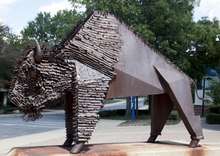Gallaudet University
Gallaudet University[lower-alpha 1] /ˌɡæləˈdɛt/ is a federally chartered private university for the education of the deaf and hard of hearing. It is located in Washington, D.C., on a 99-acre (0.40 km2) campus.[6]
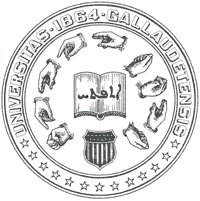 | |
| Latin: Universitas Gallaudetensis | |
Other name | Gallaudet |
|---|---|
Former names | Columbia Institution for the Deaf and Dumb National Deaf-Mute College Columbia Institution for the Deaf |
| Motto | |
Motto in English | Be opened |
| Type | Private congressionally chartered university[1] |
| Established | April 8, 1864 |
| Affiliation | NAICU MSCHE |
| Endowment | $183 million (2018)[2] |
| President | Roberta Cordano |
Academic staff | 239[2] |
Administrative staff | 692[2] |
| Students | 1,860 (Fall 2018)[2] |
| Undergraduates | 1,138 (Fall 2018)[2] |
| Postgraduates | 419 (Fall 2018)[2] |
Other students | 271 (Fall 2018)[2] |
| Location | , United States 38.907222°N 76.993056°W |
| Campus | Urban 99 acres (0.40 km2) |
| Newspaper | The Buff and Blue |
| Colors | Buff and Blue [3] |
| Athletics | NCAA Division III NEAC ECFC |
| Nickname | Bison |
| Mascot | Gally the Bison[4] |
| Website | www |
 | |
Founded in 1864, Gallaudet University was originally a grammar school for both deaf and blind children. It was the first school for the advanced education of the deaf and hard of hearing in the world and remains the only higher education institution in which all programs and services are specifically designed to accommodate deaf and hard of hearing students. Hearing students are admitted to the graduate school and a small number are also admitted as undergraduates each year. The university was named after Thomas Hopkins Gallaudet, a notable figure in the advancement of deaf education.
Gallaudet University is officially bilingual, with American Sign Language (ASL) and written English used for instruction and by the college community. Although there are no specific ASL proficiency requirements for undergraduate admission, many graduate programs require varying degrees of knowledge of the language as a prerequisite.[7]
History
Early history (1859–1890)
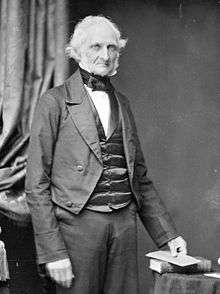
In 1856, philanthropist and former United States postmaster general Amos Kendall became aware of several deaf and blind children in Washington, D.C., who were not receiving proper care. Kendall had the courts declare the children to be his wards and donated 2 acres (8,100 m2) of his land to establish housing and a school for them.[8] Edward Miner Gallaudet was the first superintendent of the new school. Later, John Carlin suggested placing a monument of Thomas Hopkins Gallaudet with Alice Cogswell.[9]
In 1857, the 34th Congress passed H.R. 806, which chartered the grammar school as the Columbia Institution for the Instruction of the Deaf and Dumb and the Blind and funded tuition costs for indigent deaf, dumb (mute), or blind children belonging to the District of Columbia.[10] Seven years later, in 1864, the 38th Congress authorized the institution to grant and confirm college degrees.[11] The collegiate department became known as the National Deaf-Mute College. The following year, in 1865, the 38th Congress removed the instruction that the institution was to educate the blind, and renamed it the Columbia Institution for the Instruction of the Deaf and Dumb.
The school was established in 1857 with considerable efforts being made by several concerned citizens of Washington, D.C. Two houses were used, one purchased and one rented. On November 1, 1858, the First Annual Report was submitted to the Secretary of the Interior.[12]

During the school's second full year of operation (1858–1859), 14 deaf students and 7 blind students were in attendance. Superintendent Gallaudet, anticipating the future growth of the school, requested money for more buildings, lamenting the fact that the money was not issued in the year prior, due to federal budget problems. The Second Annual Report was submitted November 5, 1859.[13]
During the third academic year (1859–1860), Kendall beseeched the federal government for funds to relocate the school to more spacious grounds. Gallaudet praised Kendall for donating money needed to construct a new brick building; however, both school buildings were already at capacity. There were 24 deaf students, necessitating a second teacher of the deaf. The teacher of the 6 blind students resigned due to health concerns.[14]
By the 1860–61 academic year, the Civil War had been in progress for over six months. Gallaudet reported that the students were safe and free from fear. There were 35 deaf students and 6 blind students in attendance during the academic year. An art teacher was hired for the first time.[15]
During 1861–62, new monies provided for industrial education were used to rent a nearby shop in order to teach cabinet-making to the male students. Plans were underway to construct a new building using $9,000 that Congress appropriated to the school. There were 35 deaf students and 6 blind students. During vacation in August a regiment of troops used the brick building for a hospital, and some of the students who stayed over the summer helped with tending to the sick soldiers. One soldier died. For the first time, Gallaudet proposed expanding the school to create a college for deaf students.[16]
Even with new construction completed for the 1862–1863 school year, the school was still at capacity and more money was needed to purchase 13 acres (53,000 m2) of adjoining land and then build even more buildings. Gallaudet asked for money to pipe in water from the river, as the existing cistern and well were inadequate to the school's needs.[17]
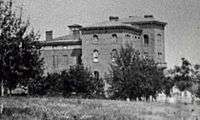
College-level courses were offered for the first time during the 1864–65 academic year. Congress provided approval for Columbia to grant college degrees, and an enabling act for the college was passed and approved by President Lincoln. An elaborate inauguration ceremony was held in June with Laurent Clerc in attendance. Fourteen acres of land was purchased with money supplied by the government. Gallaudet was promoted to the position of president of the institution. He continued to push for funds for expansion and new buildings. Gallaudet also proposed discontinuing services for blind students, saying that the small number of blind students would be better served at the school for the blind in Baltimore.[18]
The enrollment numbers increased rapidly during the 1864–65 academic year. Gallaudet asked the government for money to accomplish several projects, including the construction of an ice house and a gas house, sewer lines, and more. Major construction continued on campus. The name of the collegiate department was changed to "National Deaf-Mute College". The blind students were transferred to a school in Baltimore.[19]
During the 1865–66 academic year, Gallaudet responded to criticism from supporters of the oral method in Massachusetts, saying that oral instruction is usually of little value to congenitally deaf children. Gallaudet proposed that a representative of the school be sent to Europe to study the methods employed there, in order to determine which types of instructional methods might be added to those methods already being used successfully at the Columbia Institution and other American schools. Combined enrollment of all levels of instruction, including the collegiate level, exceeded 100 for the first time during this year. There were 25 students enrolled in the college, including students from 14 states of all parts of the Union. Edward Allen Fay joined the faculty as a professor of history, having learned to sign as a child.[20]
In the 1866–67 academic year, the building for the primary school was extended and sickness was thereby reduced. A mathematics professor was hired for the first time. More money was needed to accommodate additional students expected to swell the ranks of the school.

Gallaudet gave a lengthy account of his travels to Europe and was very critical of the extent to which speech is taught to deaf children in European schools for the deaf. Nevertheless, he recommended that a limited amount of speech training be afforded to deaf students in America to those who show they can benefit. His travels took him to: Doncaster, England; Birmingham, England; Manchester, England; Liverpool, England; Glasgow, Scotland; Belfast, Ireland (Belfast, Northern Ireland); Dublin, Ireland; Geneva, Switzerland; Nancy, France, Saint-Hippolyte-du-Fort, France; Vienna, Austria; Leipsic, Saxony (Leipzig, Germany); Lubec (Lübeck, Germany); Frankfort On-the-Main (Frankfurt, Germany); Brussels, Belgium; Zurich, Switzerland; Rotterdam, Netherlands; Paris, France; Weissenfels, Prussia (Weißenfels, Germany); Prague, Bohemia; (Prague, Czech Republic); Berlin, Prussia (Berlin, Germany); Milan, Italy; Genoa, Italy; Turin, Italy; Dresden, Saxony (Dresden, Germany); London, England; Edinburgh, Scotland; Bordeaux, France; Marseilles, France; Munich, Bavaria (Munich, Germany); Bruges, Belgium; St. Petersburg, Russia; Åbo, Finland (Turku, Finland); Stockholm, Sweden; and Copenhagen, Denmark.[21]
The biggest educational conference in the then-history of deaf education was held during the month of May 1868 in Washington, D.C., largely made up of principals of schools for the deaf. Fourteen of the twenty-two schools for the deaf were represented. The chief topic of discussion was the recommendations put forth by Edward Gallaudet regarding adding articulation lessons to schools' curricula.[22]
In 1868–69, the first students completed a full course of college studies, all graduating with bachelor's degrees.[23]
The founder of the school, Amos Kendall, died in November 1869. Gallaudet delivered a eulogy at the board meeting in January 1870. The main central building was partially completed, with rooms in the basement and on the first floor first being used. Plans were being made to purchase Amos Kendall's estate, which adjoined the grounds of the school. Gallaudet cautioned Congress that Kendall's heirs had plans to subdivide the property if it was not sold to Columbia, and hence the land would never again become available for purchase as a whole.[24]
In 1881, Laura Sheridan, a hearing woman, inquired about Gallaudet University's accepting women. She was told that deaf women could not enter the institution. In 1887 Gallaudet agreed to allow women to apply with the intent that women would not stay. Temporary living arrangements were made and the college remained co-educational.[25]
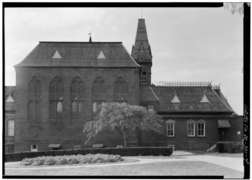 Exterior view of the Chapel
Exterior view of the Chapel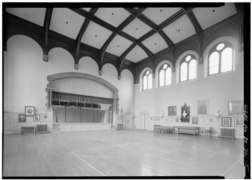 Inside the Chapel, view toward the Choir
Inside the Chapel, view toward the Choir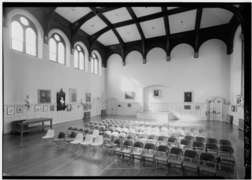 Inside the Chapel, view toward the Pulpit
Inside the Chapel, view toward the Pulpit- Chapel Hall
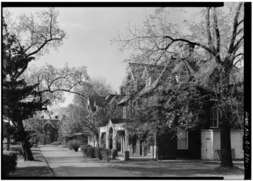 Campus view looking south toward Faculty Row
Campus view looking south toward Faculty Row
20th Century
In 1954, Congress amended the charter of the institution, changing the corporate name to Gallaudet College, which had been the official name of the collegiate department since 1894.[26]
During his 17 years as Dean of the College in the 1950s and 1960s, George Ernst Detmold was a significant figure in helping the college achieve accreditation. He also led the college in developing new departments, especially drama. He directed Gallaudet theater productions, which eventually led to starting the National Theatre of the Deaf.[27]
In 1986, Congress again amended the charter of the Institution, renaming it Gallaudet University.[28]
Deaf President Now (1988)
Student strikes at Gallaudet University starting March 6, 1988, revolutionized the perception and education of Deaf culture. Deaf students were outraged at the selection of another hearing president, Elisabeth Zinser; the university had never selected a deaf person for this position. Alumni, faculty, staff, and students demanded that the next president of the university be deaf. After a week of protest and activism, Zinser resigned and was replaced by I. King Jordan. This movement became known as Deaf President Now (DPN).
Unity for Gallaudet Movement (2006)


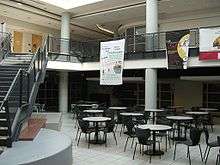
Jordan announced his retirement in September 2005. On May 1, 2006, the university's board of trustees announced that Jane Fernandes, the university's current provost, would be the university's next president. This was met with protests from the student body, both in person on campus and in internet blogs and forums.
Initially, students cited the lack of racial diversity among finalists, Fernandes's lack of warmth,[29] and her lack of fluency in American Sign Language.[30]
Jordan publicly accused some critics of rejecting Fernandes because "she is not deaf enough." He described the protest as "identity politics", saying, "We are squabbling about what it means to be deaf."[31]
The Washington Post reported that Fernandes "would like to see the institution become more inclusive of people who might not have grown up using sign language," stating that Gallaudet must embrace "all kinds of deaf people."[32] Those who opposed her said that they feared a "weakening of American Sign Language at an institution that should be its standard-bearer."[33] Protesters said Fernandes distorted their arguments and that the protest centered on her inability to lead, an unfair selection process and longstanding problems at the school.[34]
In the spring 2006 protest, students blocked entrances to the Gallaudet campus, held rallies, and set up tents near the university's main entrance. Fernandes, appointed to serve as president-designate until Jordan retired, said that she would not step down. On May 8, the faculty gave a vote of no confidence for Fernandes.
When the fall 2006 academic year resumed, some students, faculty, staff, and alumni continued their protest, calling for Fernandes to step down and for the presidential search to be done again. On October 11, a group of protesting students shut down the campus. On October 16 at a regularly scheduled meeting, faculty members voted 138 to 24 to block Fernandes from becoming president of Gallaudet University.
Fernandes said, "I really don't understand so I have to believe it's not about me. ... I believe it's about evolution and change and growth in the deaf community."[35]
On October 29, the university withdrew the appointment of Fernandes.[36] In an opinion piece in The Washington Post, Jordan defended Fernandes's remarks and denounced the board's decision and the actions of the protesters, saying, "I am convinced that the board made a serious error in acceding to the demands of the protesters by terminating Fernandes's presidency before it began."[37]
On December 10, 2006, the Board of Trustees announced that Robert Davila would serve as interim president for a period of up to two years.[38] He was formally installed on May 9, 2007, during a ceremony that included a speech by D.C. Congressional Delegate Eleanor Holmes Norton, who spoke positively of the 2006 protest.[39] He stepped down on December 31, 2009.
On June 29, 2007, in the aftermath of the controversy over the university's presidency, Gallaudet was temporarily placed on probation by its accreditation organization, the Commission on Higher Education of the Middle States Association of Colleges and Schools.[40] It was also reported that in 2006, the Office of Management and Budget had found that "Gallaudet failed to meet its goals or showed declining performance in key areas, including the number of students who stay in school, graduate and either pursue graduate degrees or find jobs upon graduation."[41] In January 2007, former president Jordan wrote an editorial on the topic that appeared in the Washington Post.[38] The Middle States Commission later reaffirmed Gallaudet's accreditation on June 27, 2008.[42]
On October 18, 2009, the Board of Trustees announced that Gallaudet's tenth president would be T. Alan Hurwitz. He began his tenure on January 1, 2010, and served until he retired on December 31, 2015, succeeded by Roberta Cordano, the eleventh president.
Congressional charter
The university acknowledges that it "is a congressionally created corporation that serves governmental objectives."[43] The university and the Department of Education explain that Gallaudet has been structured by the Federal Government to take the form of a "federally chartered, private, non-profit educational institution." The federal government plays various roles within the institution:[44]
- Congress incorporated the Columbia Institution in 1857, significantly amended its charter in 1954, and authorized permanent congressional appropriations. In 1986, Congress passed the Education of the Deaf Act and amended it in 1992. These Congressional acts are part of "the supreme law of Gallaudet University."[45]
- Gallaudet must obtain authorization from the secretary of the US Department of Education in order to sell or transfer title of any of its real property.[28]
- The diplomas of all Gallaudet graduates are signed by the current U.S. president, which dates from President U.S. Grant signing students' diplomas in 1872.[46]
- Three members of Congress are appointed to the university's board of trustees as "Public Members."[47]
- Gallaudet must provide annual reports to the secretary of education.[48]
- "Gallaudet receives the bulk of its income in the form of an annual appropriation from Congress, and the Department of Education oversees the University's appropriation for the Federal government."[49]
- Gallaudet University (and the National Technical Institute for the Deaf) are authorized to make purchases through the General Services Administration.
Gallaudet's Fifty-Fifth Annual Report[50] contains an appendix that includes the text of 99 Federal Acts related to Gallaudet/Columbia which were enacted between 1857 and 1912.
Presidential visits
There have been 15 occasions in Gallaudet history when a US president has visited either the campus or attended an official function off campus.[51] President Johnson's second visit, in 1966, was unannounced and impromptu. President Taft had promised to attend President Percival Hall's installation on May 10, 1911 and give an address, but cancelled at the last moment, before the ceremony.[52] President Kennedy had planned to attend the centennial celebration at Gallaudet in 1964, but was assassinated.[53]
- President Ulysses S. Grant, 1870 and 1871.[54][55]
- President Rutherford B. Hayes, 1877,[56] 1878, 1879, and 1880.[57][58][59][60]
- President James A. Garfield, 1881.[61][62][63]
- President Chester A. Arthur, 1882.[64]
- President Grover Cleveland, 1885.[65]
- President Benjamin Harrison, 1889 (Two visits, May and June).[66][67]
- President Theodore Roosevelt, 1906.[68][69][70]
- President Lyndon Baines Johnson, 1964[71][72][73] and 1966.[74][75]
- President Bill Clinton, 1994.[76]
Academics
Several programs and majors are offered at Gallaudet University. The five most popular majors are business, visual and performing arts, communication studies, physical education, and psychology. Gallaudet University offers thirty graduate programs in ten Departments as well as on-line and on-campus continuing education courses.[77] Over 90 percent of the classes offered at Gallaudet University contain fewer than 20 students.[77] The freshman retention rate at the university is 69–77 percent, the four-year graduation rate is 17–27 percent, and the six-year graduation rate is 43–53 percent (for freshmen entering 2008–2012).[78]
Classes are conducted in ASL with no spoken English, and curriculum materials are designed in both ASL and English. The classrooms are visually-oriented, and are organized around the philosophy of Deaf space, such as all the desks arranged in a circle so that all students and teachers can see one another for discussions.[79] If a professor needs to get the attention of the classroom, they will flash a light signal.[80]
Campus
Historic designations
The Gallaudet campus, comprising the Gallaudet College Historic District, has been designated a historic place on several registries and surveys:
- Gallaudet College Historic District was added to the National Register of Historic Places in 1974.[82][83]
- District of Columbia Inventory of Historic Sites (listings added in 1964 and 1973).[84][85]
- National Historic Landmarks designation (added 1965).[86]
- Historic American Buildings Survey (added 1933).[87]
Pre-college education
The campus is shared with Kendall Demonstration Elementary School, a day school serving deaf and hard of hearing students from birth through grade 8,[88] and the Model Secondary School for the Deaf, a day and residential high school for deaf and hard of hearing students.[89]
Gallaudet also operates a child development center with admissions priority for children of faculty, staff, and students. Separate from the KDES Early Childhood Program, the child development center is inclusive of, but not exclusively for, deaf and hard-of-hearing children.[90]
Redevelopment of campus (2015–2024)
In October 2014, the Gallaudet University board of trustees announced a 10-year, $450 million development of its campus along 6th Street NE. The development, which includes both campus property as well as college-owned residential and retail property across the street, will be overseen by JBG Smith.[91][92]
Athletics
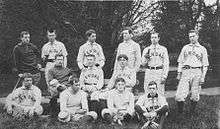
Gallaudet is a member of NCAA Division III and the North Eastern Athletic Conference.[93] The teams that play in the North Eastern Athletic Conference are the men's and women's basketball, cross country, soccer teams, along with the baseball, softball, and volleyball teams.[93] However, the Gallaudet football team plays in the Eastern Collegiate Football Conference. In addition to the football team, which plays in a different conference than most sports at Gallaudet, the men's and women's swimming teams, as well as the men's and women's track and field teams, compete as independents. The Bison compete in baseball, basketball, cross country running, football, indoor and outdoor track and field, soccer, softball, swimming, tennis, volleyball, and wrestling. Their colors are buff and blue, which were chosen after Union soldiers' uniforms in the Civil War.
The football and soccer teams play at Hotchkiss Field with the track and field teams using Berg Track located within Hotchkiss Field for track meets. Basketball and volleyball use the GU Field House for home games. Hoy Field is home to the baseball team and the GU Softball Complex hosts the softball team.[94]
Women's basketball
Gallaudet women's basketball made its biggest splash in 1999, with a group of players from the Minnesota State Academy for the Deaf among those leading the way. Ronda Jo Miller, most certainly the greatest women's basketball player in the program's history, was a three-time Division III All-America selection, as well as one of the top women's volleyball players.
Under the leadership of coach Kitty Baldridge, Miller, Touria Ouahid, Ronda Johnson and Jenny Cooper led the Bison to the NCAA Tournament for the second time in three seasons. Receiving one of the lowest seeds as an at-large team into the Division III NCAA Tournament field, which numbered just 48 teams, the Bison traveled to St. Mary's College (Md.), the school which had just defeated them in the Capital Athletic Conference tournament, and came away with an 80–73 win. In the second round, Gallaudet faced a team from The College of New Jersey which had received a first-round bye and was highly favored, but Miller poured in 38 points, using a variety of impressive shots. The Bison advanced to the Sweet 16 round of the 1999 tournament before falling to host school Salem State College (Mass.).[95]
Miller finished with 2,656 points scored, 1,545 rebounds and 373 blocked shots, and was called "one of the best basketball players in Division III history" by the NCAA.[96]
Kevin Cook coached the team briefly to success. The team had not won a conference game in five years and even lost a game by 75 points in Cook's first year in charge.[97] Cook's persistence on defense and discipline turned the program around. Gallaudet began the 2010–11 season on a 20-game winning streak and finished the season 24–4 (20–2 in conference play). Cook was named North Eastern Athletic Conference Coach of the Year, and senior Easter Faafiti was voted NEAC Player of the Year. The 2010–11 season ended in the first round of the Division III NCAA Championships with a loss to Juniata.[98]
After a victory over Penn State-Berks in the 2010–11 season, Penn State guard Corin Bishop "said that she views the Gallaudet team as a great basketball team, not a team of deaf players." Hayes of Gallaudet later said, "I feel like there are people who stereotype us as deaf players, I'm just like everyone else who plays basketball".[97] In an interview with Lydia Lum of Diverse, he said, "Because of us, there's a growing awareness that there are differences between deaf people, but we're all the same."[99]
Football
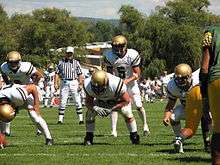
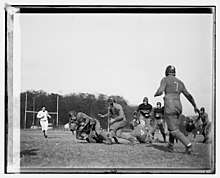
The football huddle originated at Gallaudet when the team noticed that their opponents were trying to see and read their signs in order to try to guess their plays.[100]
After an undefeated season in 2005, which was achieved after 122 years, head coach Ed Hottle began his campaign to return Gallaudet to the NCAA ranks. With support from the Gallaudet administration, the Bison played their last season of club football in 2006 and played a full NCAA slate of eight games in 2007.[101]
After the 2009 football season, Coach Hottle left to become the first head coach of the first football team at Stevenson University. He announced his decision in a heart-felt meeting with the football team. Offensive Coordinator Chuck Goldstein was tapped to be the interim head coach of the football team. On December 17, 2009, the interim tag was removed and he is now the permanent head coach of the team.[102]
Gallaudet University's football team has a longstanding rivalry with Catholic University of America, another school in the Washington, D.C., area. On September 7, 2012, Gallaudet University defeated Catholic University of America for the first time in the 106-year history of the rivalry between the two D.C. schools.[103]
In the fall of 2013, Gallaudet's football program began a remarkable run for the Division III playoffs and garnering a considerable amount of publicity, winning the regular season with a 9–1 record, before falling to Hobart College in the first round of the playoffs and ending the season with a 9–2 (.818) overall record.[104][105]
Volleyball
In 2006, the Gallaudet women's volleyball team ended their season 30–10 after a history-making run to the Sweet Sixteen in the NCAA Division III tournament. Tamijo Foronda, a senior outside hitter, was named to the AVCA All-American Team.[106]
Noted athletes
Notable athletes that have attended the university include:
- Richard Jacobs, member of the national US handball team squad, with several international games to his credit; was one of the last cuts with the US Olympic Team Handball squad
- Dawn Birley, certified as Olympic-eligible, won several national Canadian Taekwondo championships; she didn't make it to the Olympics only because taekwondo was not considered as a medal sport in the 1996 Summer Olympics.
- Denny Guinn, another Canadian, was the nation's top ranked Air Pistol shooter; while representing Gallaudet at the National Collegiate Shooting championship, finished #1 in the nation, despite having to practice at a shooting range, off campus because of safety concerns
- Marvin Marshall won the Washington, DC local Golden Gloves boxing championship and took part at the national Golden Gloves championship; had over 500 amateur bouts in his boxing career
- Gillian Hall was a Connecticut state synchronized swimming champion
- Tony Tatum, All-American Cornerback from 2009–2012, became the first football player in Gallaudet University to play professionally. Signed to AFL's Utah Blaze and posted 3 interceptions, one returned for a touchdown. Currently signed to the Cleveland Gladiators.
Greek life
The campus Greek community is relatively small with only 4 fraternities and 4 sororities. The four fraternities are Kappa Gamma, Alpha Sigma Pi, Kappa Sigma, and Delta Sigma Phi. The four sororities are Delta Epsilon, Phi Kappa Zeta, Alpha Sigma Theta, and Delta Zeta.
Suspension of Kappa Gamma
After photos emerged in June 2020 of members wearing robes with pointed hoods which resembled Klu Klux Klan garb, Gallaudet University suspended the Kappa Gamma fraternity as part of the university's "work of dismantling racism". A 1989 photograph of Kappa Gamma members in appearing to give the Nazi salute had also recently resurfaced, though the school said the photograph did not contribute to the suspension.[107]
This was the fourth time the chapter had been suspended. The president of the school said "[Kappa Gamma] have become the face of systemic racism in our community, with photographs of the salute and use of robes being shared on social media. This behavior is unacceptable.... We are in the process of reviewing other organizations and the status of their histories and their efforts to determine if further steps will need to be taken."[107][108][109]
Research
The Gallaudet Office of Research Support and International Affairs (RSIA) (formerly Gallaudet Research Institute or GRI) is internationally recognized for its leadership in deafness-related research. RSIA researchers gather and analyze data concerning the social, academic, and perceptual characteristics of deaf and hard of hearing populations, primarily to provide information needed by educators in the field. Staff are skilled in various research methodologies including surveys, test norming and assessment, ethnographic studies, clinical studies, and information management.[110] In 2016, RSIA began hosting the Gallaudet Research Expo, to give students, faculty, and staff "the opportunity to share ideas and showcase scholarly pursuits and achievements."[111] Presentations represent "education, linguistics, STM, neuroscience, interpretation and translation, computer science, audiology, psychology, deaf studies, and other fields that reflect Gallaudet's research priorities."[111] The third Gallaudet RExpo will be held in October 2018.
Gallaudet University Press publishes two academic journals, American Annals of the Deaf (est. 1847) and Sign Language Studies (est. 1972). The Annals are "the oldest and most widely read English-language journal dealing with deafness and the education of deaf persons."[112]
The Department of Psychology's chapter of Psi Chi publishes the journal Gallaudet Chronicles of Psychology.[113] The journal is managed and edited by graduate student members of the chapter. The Chronicles are designed to "mimic professional, peer-reviewed journals"[114] and provides graduate students with an opportunity disseminate their original psychology research.[114] In 2018, the chapter will be publishing the fifth volume of the Chronicles.
In the fall of 2010, the university's Department of Deaf Studies launched the Deaf Studies Digital Journal[115] (DSDJ), the first peer-reviewed academic and creative arts journal in American Sign Language and English.[116] The DSDJ itself is published in entirely video-based content and is available online. To date, only four issues of DSDJ have been released, the most recent being published in 2014.
People
Notable alumni
- Linda Bove, actress
- Bernard Bragg, actor
- Robert R. Davila, 9th President of Gallaudet (Undergraduate, 1953)
- Nyle DiMarco, American actor, model and activist
- Andrew Foster, missionary, first self-identified Black Deaf person to earn a bachelor's degree at Gallaudet
- Phyllis Frelich, actress
- Tyrone Giordano, actor
- Alice Lougee Hagemeyer, librarian
- Olof Hanson, American architect
- Russell Harvard, actor
- Bruce Hlibok, playwright, author, actor
- I. King Jordan Jr., 8th President of Gallaudet (Undergraduate, 1970)
- Ella Mae Lentz, poet
- Dorothy Miles, British poet and activist
- Wilma Newhoudt-Druchen, South African politician
- Louise Stern, writer and artist
- Shoshannah Stern, actress
- George Veditz, teacher, American Sign Language filmmaker, preservatist of American Sign Language
- Marlee Matlin, actress, activist, author, and Academy Award winner
Notable faculty
| Faculty | Number of years in service | Years in service |
|---|---|---|
| Percival Hall Sr. | 58 years | 1895–1953 |
| Edward Allen Fay[117] | 57 years | 1866–1923 |
| John B. Hotchkiss | 53 years | 1869–1922 |
| Edward Miner Gallaudet | 46 years | 1864–1910 |
| Amos G. Draper[118] | 44 years | 1873–1917 |
| Irving S. Fusfeld[119] | 44 years | 1916–1960 |
| Elizabeth Benson[120] | 44 years | 1926–1970 |
| William C. Stokoe, Jr. | 29 years | 1955–1984 [121] |
| R. Orin Cornett | 19 years | 1965–1984 |
| Teresa Blankmeyer Burke | 13 years | 2005–present |
| Betty G. Miller | 17 years[122] |
List of presidents of Gallaudet University
- Edward Miner Gallaudet (1864–1910)
- Percival Hall (1910–1945)
- Leonard M. Elstad (1945–1969)
- Edward C. Merrill Jr. (1969–1983)
- W. Lloyd Johns (October 1983 – January 1984)
- Jerry C. Lee (1984–1988)
- Elisabeth A. Zinser (March 1988)
- I. King Jordan Jr. (1988–2006)
- Robert Davila (2006–2009)
- T. Alan Hurwitz (2010–2015)
- Roberta Cordano (2016–present)
See also
- American School for the Deaf
- American Sign Language
- Bilingual-bicultural education
- National Association of the Deaf (United States) (NAD)
- National Technical Institute for the Deaf (NTID)
- Willy Conley
- Andrew Foster (educator)
- Francis Maginn
- William Stokoe
References
- "Columbia Institution for the Deaf" was the corporate name for what is now Gallaudet University. In 1954 a law was passed, changing the corporate name to "Gallaudet College." (The collegiate department of the Columbia Institution had gone by the name "Gallaudet College" since 1894.) In 1986, another law was passed changing the name to "Gallaudet University."[5]
- Profiles of Existing Government Corporations—A Study Prepared by the U.S. General Accounting Office for the Committee on Government Operations Archived April 15, 2012, at the Wayback Machine. 1988. (Document: H402-4) Washington, DC: U.S. Government Printing Office, pp. 18, 125
- "Annual Report of Achievements: October 1, 2017 – September 30, 2018" (PDF). Gallaudet University. Gallaudet University of the Provost. 2019. Retrieved July 5, 2019.
- "Gallaudet Visual Identity Guide" (PDF). Gallaudet University. Gallaudet University Office of Communications and Public Relations. n.d. Retrieved July 5, 2019.
- "Gallaudet's new mascot, Gally, debuts during 150th Reunion Week". Gallaudet University Athletics. Gallaudet University. July 10, 2014. Retrieved July 5, 2019.
- "Title 20: Education" (PDF). US Government Printing Office. pp. 1097–1098. Archived (PDF) from the original on June 10, 2015.
- Staff (2013). "Gallaudet University". U.S. News and World Report. Archived from the original on April 7, 2013. Retrieved February 18, 2013.
- "Communication & Culture Issues – Gallaudet University". Archived from the original on October 16, 2007.
- "History of Gallaudet University". Gallaudet University. Archived from the original on April 15, 2013. Retrieved July 18, 2012.
- "John Carlin". Deafbiography.com. Archived from the original on March 16, 2012. Retrieved February 10, 2012.
- "A Century of Lawmaking for a New Nation: U.S. Congressional Documents and Debates, 1774–1875". The Library of Congress. Archived from the original on April 30, 2013. Retrieved July 18, 2012.
- "38th Congress: Session 1, Chapter 52" (PDF). Save Our Deaf Schools. Archived (PDF) from the original on September 21, 2013. Retrieved July 16, 2012.
- "First Annual Report" (PDF). Save Our Deaf Schools. November 1, 1858. Archived (PDF) from the original on February 9, 2012. Retrieved July 18, 2012.
- "Second Annual Report" (PDF). Save Our Deaf Schools. November 5, 1859. Archived (PDF) from the original on September 21, 2013. Retrieved July 18, 2012.
- "Third Annual Report" (PDF). Save Our Deaf Schools. November 5, 1860. Archived (PDF) from the original on February 9, 2012. Retrieved July 18, 2012.
- "Fourth Annual Report" (PDF). Save Our Deaf Schools. November 5, 1861. Archived (PDF) from the original on September 21, 2013. Retrieved July 18, 2012.
- "Fifth Annual Report" (PDF). Save Our Deaf Schools. November 3, 1862. Archived (PDF) from the original on September 21, 2013. Retrieved July 18, 2012.
- "Fifth Annual Report" (PDF). Save Our Deaf Schools. October 15, 1863. Archived (PDF) from the original on September 21, 2013. Retrieved July 18, 2012.
- "Seventh Annual Report" (PDF). Save Our Deaf Schools. November 17, 1864. Archived (PDF) from the original on September 21, 2013. Retrieved July 18, 2012.
- "Eight Annual Report" (PDF). Save Our Deaf Schools. November 6, 1865. Archived (PDF) from the original on September 21, 2013. Retrieved July 18, 2012.
- "Ninth Annual Report" (PDF). Save Our Deaf Schools. November 6, 1866. Archived (PDF) from the original on September 21, 2013. Retrieved July 18, 2012.
- "Tenth Annual Report" (PDF). Save Our Deaf Schools. October 28, 1867. Archived (PDF) from the original on February 9, 2012. Retrieved July 18, 2012.
- "Eleventh Annual Report" (PDF). Save Our Deaf Schools. October 26, 1868. Archived (PDF) from the original on December 19, 2013. Retrieved July 18, 2012.
- "Twelfth Annual Report" (PDF). Save Our Deaf Schools. October 20, 1869. Archived (PDF) from the original on December 19, 2013. Retrieved July 18, 2012.
- "Twelfth Annual Report" (PDF). Save Our Deaf Schools. October 29, 1870. Archived (PDF) from the original on February 29, 2012. Retrieved July 18, 2012.
- Marschark, Marc, Lang, Harry G. and Albertini, John A. "Educating Deaf Students". Oxford University Press. 2002. p. 31
- "Gallaudet College Hearing Before the Committee on Education and Labor" (PDF). 83rd Congress, Second Session. Save Our Deaf Schools. May 5, 1954. Archived (PDF) from the original on September 21, 2013. Retrieved July 16, 2012.
- "Gallaudet Dean George Detmold, 88". August 16, 2005. Archived from the original on January 11, 2017 – via www.washingtonpost.com.
- 20 U.S.C. ch. 55, "EDUCATION OF THE DEAF"
- The Chronicle of Higher Education: "Student Protests Over Presidential Pick Return to Gallaudet U." Archived October 13, 2011, at Wikiwix
- The Washington Post: "Gallaudet Names New President." Archived June 21, 2016, at the Wayback Machine
- Fox News: "Is Gallaudet University's Dean 'Deaf Enough'?" Archived May 12, 2006, at the Wayback Machine
- The Washington Post: "Signs of Change At Gallaudet." Archived September 21, 2013, at the Wayback Machine
- The New York Times: "Protests Continue at University for Deaf." Archived May 14, 2018, at the Wayback Machine
- The Washington Post: "Source of Gallaudet Turmoil Is Up for Debate." Archived March 4, 2016, at the Wayback Machine
- The Washington Post: "Gallaudet Reopens With Protesters Still At Front Gates." Archived March 4, 2016, at the Wayback Machine
- Inside Gallaudet: "Board of Trustees votes to terminate Dr. Jane Fernandes appointment as president" Archived December 1, 2006, at the Wayback Machine
- Gallaudet Chooses Interim President Archived March 22, 2018, at the Wayback Machine, Washington Post, December 11, 2006
- Jordan, I. King (January 22, 2007). "Deaf Culture and Gallaudet". The Washington Post. Archived from the original on November 4, 2012. Retrieved May 3, 2010.
- "Speech by Congresswoman Eleanor Holmes Norton at the Installation of Gallaudet President Robert R. Davila" (PDF). Save Our Deaf Schools. May 9, 2007. Archived (PDF) from the original on February 9, 2012. Retrieved July 16, 2012.
- "News". news.gallaudet.edu. Archived from the original on June 22, 2010.
- On Probation Archived March 22, 2018, at the Wayback Machine, Washington Post, July 14, 2007.
- "MSCHE Accreditation – Gallaudet University". Aaweb.gallaudet.edu. June 26, 2008. Archived from the original on June 9, 2010. Retrieved February 10, 2012.
- "Janice Becker, Plaintiff vs. Gallaudet University, Defendant" (PDF). Save Our Deaf Schools. Archived (PDF) from the original on March 13, 2012. Retrieved July 16, 2012.
- "Profiles of Existing Government Corporations" (PDF). U.S. Government Accountability Office. Archived (PDF) from the original on March 12, 2012. Retrieved July 16, 2012.
- "Article I – Authority – Gallaudet University". Archived from the original on June 5, 2013.
- "Gallaudet History – Gallaudet University". Archived from the original on August 26, 2010.
- "Board of Trustees – Gallaudet University". Archived from the original on September 1, 2006.
- Major, Owens (October 16, 1992). "H.R.5483 – 102nd Congress (1991–1992): Education of the Deaf Act Amendments of 1992". thomas.loc.gov. Archived from the original on July 5, 2016.
- Administration and Finance – Gallaudet University Archived June 19, 2006, at the Wayback Machine
- "Columbia Institution for the Deaf Annual Report, Gallaudet University Archives, 1912" (PDF). Archived from the original (PDF) on February 27, 2008.
- Centennial Souvenir Book Committee. 1965. "Presidents Who Came To Our College," in: Our Heritage—Gallaudet College Centennial, Graphic Arts Press: Washington, D.C., page 28
- The Installation of President Hall. Volta Review, Vol 13, No. 3, p. 171
- Gallaudet College Alumni Association. 1964. Our Heritage: Gallaudet College Centennial Archived February 11, 2017, at the Wayback Machine, Washington, DC: Graphic Arts Press, p. 21
- "Columbia Institution for the Deaf Annual Report, Gallaudet University Archives, 1870" (PDF). Archived (PDF) from the original on February 27, 2008.
- "A Growing College" (PDF). Gallaudet Protest. Archived from the original (PDF) on March 8, 2012. Retrieved July 16, 2012.
- "Speeches & Messages of Rutherford B. Hayes". Rutherford B. Hayes Presidential Library & Museums. Archived from the original on September 28, 2015.
- "Columbia Institution for the Deaf Annual Report, Gallaudet University Archives, 1877" (PDF). Archived (PDF) from the original on February 27, 2008.
- Gallaudet, Edward Miner; Fischer, Lance J.; De Lorenzo, David L. (1983). History of the College for the Deaf, 1857–1907 – Edward Miner Gallaudet, Lance J. Fischer, David L. De Lorenzo – Google Boeken. ISBN 9780913580851. Retrieved February 10, 2012.
- "Columbia Institution for the Deaf Annual Report, Gallaudet University Archives, 1879" (PDF). Archived (PDF) from the original on February 27, 2008.
- "Columbia Institution for the Deaf and Dumb: 23rd Annual Report" (PDF). Save Our Deaf Schools. Archived (PDF) from the original on March 13, 2012. Retrieved July 16, 2012.
- "Columbia Institution for the Deaf Annual Report, Gallaudet University Archives, 1881" (PDF). Archived (PDF) from the original on February 27, 2008.
- Gallaudet, Edward M. "A History of the Columbia Institution For The Deaf and Dumb" (PDF). Save Our Deaf Schools. Archived (PDF) from the original on February 9, 2012. Retrieved July 16, 2012.
- "Address of Emeritus President E.M. Gallaudet" (PDF). Save Our Deaf Schools. May 6, 1914. Archived (PDF) from the original on February 9, 2012. Retrieved July 16, 2012.
- "Columbia Institution for the Deaf Annual Report, Gallaudet University Archives, 1882" (PDF). Archived (PDF) from the original on February 27, 2008.
- "Columbia Institution for the Deaf Annual Report, Gallaudet University Archives, 1885" (PDF). Archived (PDF) from the original on March 27, 2015.
- "Columbia Institution for the Deaf Annual Report, Gallaudet University Archives, 1889" (PDF). Archived from the original (PDF) on March 27, 2015.
- Gallaudet College Alumni Association. 1964. Our Heritage: Gallaudet College Centennial Archived February 11, 2017, at the Wayback Machine, Washington, DC: Graphic Arts Press, p. 28
- Roosevelt, Theodore (March 23, 2018). "Presidential addresses and state papers". New York : The Review of Reviews Company – via Internet Archive.
- "Columbia Institution for the Deaf Annual Report, Gallaudet University Archives, 1906" (PDF). Archived from the original (PDF) on March 27, 2015.
- Our Heritage: Gallaudet College Centennial. Washington, D.C.: Graphic Arts Press. 1964. OCLC 3215893.
- Gannon, Jack. 1981. Deaf Heritage–A Narrative History of Deaf America, Silver Spring, MD: National Association of the Deaf, p. 319 (PDF)
- "Lyndon B. Johnson: Remarks at the Gallaudet College Centennial Banquet". Presidency.ucsb.edu. June 6, 1964. Archived from the original on May 23, 2013. Retrieved July 16, 2012.
- University, Gallaudet. "- Gallaudet University". videocatalog.gallaudet.edu. Archived from the original on September 27, 2015.
- "Archived copy" (PDF). Archived (PDF) from the original on February 27, 2008. Retrieved January 5, 2008.CS1 maint: archived copy as title (link)
- University, Gallaudet. "Deaf film 166-4: President Lyndon B. Johnson as guest speaker at Gallaudet Commencement, June 13, 1966 – Gallaudet University". videocatalog.gallaudet.edu. Archived from the original on September 27, 2015.
- "Remarks at the Gallaudet University Commencement Ceremony". Weekly Compilation of Presidential Documents. 1994. Archived from the original on July 11, 2012.
- "Gallaudet University". US News & World Report. Archived from the original on September 22, 2013. Retrieved November 9, 2014.
- "Undergraduate first time freshmen student retention and graduation rates" (PDF). Fall 2018. Retrieved May 22, 2019.
- Bauman, H-Dirksen L; Murray, Joseph M. (January 2009). "Reframing: From Hearing Loss to Deaf Gain" (PDF). Deaf Studies Digital Journal – via DSDJ.
- Gormally, Cara L.; Marchut, Amber (January 2017). ""Science is not my thing": Exploring Deaf Non-Science Majors' Science Identities" (PDF). International Journal of Science Education. 20 (1) – via Educational Resources Information Center.
- "FAQ: Gallaudet Bison: This guide offers background on Gallaudet University's Bison mascot". Gallaudet University. August 2006.
- "National Register of Historical Places, District of Columbia : Galluadet University". National Park Service. Archived from the original on May 15, 2017.
- "National Register of Historical Places – Inventory Nomination Form" (PDF). National Park Service. Archived (PDF) from the original on January 7, 2017.
- "D.C. Inventory of Historic Sites" (PDF). District of Columbia. October 31, 2014. Archived (PDF) from the original on February 7, 2017.
- "Gallaudet College Historic District". District of Columbia. Archived from the original on August 3, 2017.
- "NATIONAL HISTORIC LANDMARKS SURVEY" (PDF). National Park Service. Archived (PDF) from the original on August 1, 2017.
- "HISTORIC AMERICAN BUILDINGS SURVEY INDEX TO PHOTOGRAPHS" (PDF). Library of Congress. October 1970. Archived (PDF) from the original on February 24, 2017.
- Center, Laurent Clerc National Deaf Education. "About Kendall Demonstration Elementary School – KDES". www3.gallaudet.edu. Archived from the original on August 3, 2017.
- "Model Secondary School for the Deaf". www3.gallaudet.edu. Archived from the original on July 31, 2017.
- "Varieties of Campus Child Care" (PDF). National Coalition for Campus Children's Centers. Institute for Women’s Policy Research. Retrieved May 16, 2020.
- "GALLAUDET SELECTS THE JBG COMPANIES FOR 6TH STREET NE DEVELOPMENT" (Press release). Gallaudet University. October 11, 2014. Archived from the original on August 3, 2017.
- Clabaugh, Jeff (October 10, 2014). "Gallaudet Selects JBG for Campus Development". American City Business Journals. Archived from the original on August 3, 2017.
- "Gallaudet Bison Athletics : Gallaudet University Joins North Eastern Athletic Conference". Gallaudetathletics.com. June 15, 2009. Archived from the original on June 24, 2013. Retrieved July 16, 2012.
- "Facilities". Gallaudetathletics.com. Retrieved March 16, 2019.
- "Beware the Thundering Herd". D3hoops.com. D3hoops.com. Archived from the original on April 2, 2015. Retrieved March 23, 2015.
- "Embracing the silence". NCAA.org. NCAA.org. Archived from the original on March 12, 2015. Retrieved March 23, 2015.
- Donvan, John (February 3, 2011). "Gallaudet University Making Noise in Women's Basketball". ABC News. Archived from the original on September 2, 2013. Retrieved May 14, 2013.
- "Parade magazine feature on Gallaudet University's women's basketball season". D3hoops.com. USA Today. Archived from the original on April 2, 2012. Retrieved May 14, 2013.
- Lum, Lydia. "Gallaudet Women on the Road to Winner's Circle". Diverse Issues in Higher Education. Cox, Matthews and Assoc. Archived from the original on October 26, 2013. Retrieved May 14, 2013.
- "The History of Gallaudet University (page 3)". Pr.gallaudet.edu. November 7, 1997. Archived from the original on April 15, 2012. Retrieved July 16, 2012.
- Foster, Brooke (August 19, 2007). "Sound and the Fury". The Washington Post. Archived from the original on November 8, 2012. Retrieved May 3, 2010.
- "Goldstein Named Gallaudet's 36th Head Football Coach, Davis Elevated to Assistant Coach". Gallaudet University. Archived from the original on March 2, 2012. Retrieved July 16, 2012.
- "Gallaudet Defeats Catholic for the First Time in the School History". Gallaudet University Athletics. Archived from the original on September 20, 2012. Retrieved September 7, 2012.
- Press, The Associated. "Gallaudet football prepares for first ever playoff game". Archived from the original on December 16, 2013.
- http://www.cnycentral.com/m/news/story?id=976784#.Uq7Ft3i9LCQ Archived December 16, 2013, at the Wayback Machine
- "Women's Volleyball". Gallaudet University. Archived from the original on September 7, 2012. Retrieved July 16, 2012.
- Lumpkin, Lauren (June 12, 2020). "Gallaudet University suspends fraternity after anti-Semitic photo resurfaces". Washington Post. Retrieved June 13, 2020.
- "Gallaudet U Suspends Fraternity That Has 'Become the Face of Systemic Racism'". Diverse. June 12, 2020. Retrieved June 13, 2020.
- "President Cordano's Update to Gallaudet Alumni". us3.campaign-archive.com.
- "Office of Research Support and International Affairs (RSIA)". Gallaudet University. Archived from the original on September 1, 2017. Retrieved April 10, 2018.
- "Gallaudet University Research Expo". Research Support and International Affairs. Gallaudet University. Archived from the original on April 10, 2018. Retrieved April 10, 2018.
- "American Annals of the Deaf". gupress.gallaudet.edu. Archived from the original on December 1, 2012.
- "Chronicles of Psychology". www.gallaudet.edu.
- "Chronicles of Psychology". Department of Psychology Research, Psi Chi Chapter. Gallaudet University. Archived from the original on April 10, 2018. Retrieved April 10, 2018.
- Journal, Deaf Studies Digital. "Deaf Studies Digital Journal". dsdj.gallaudet.edu.
- "Announcement of journal launch". Archived from the original on September 21, 2013.
- "Edward Allen Fay – Gallaudet University". March 4, 2016. Archived from the original on March 4, 2016.
- "Amos Draper – Gallaudet University". September 28, 2015. Archived from the original on September 28, 2015.
- "Irving S. Fusfeld – Gallaudet University". March 4, 2016. Archived from the original on March 4, 2016.
- "William C. Stokoe, Jr: Founder of Sign Language Linguistics: 1919–2000". Gallaudet University Press. Archived from the original on October 22, 2017. Retrieved April 10, 2018.
- DiGuglielmo, Joey (January 9, 2013). "Betty Miller, 78". Washington Blade. Archived from the original on August 24, 2017. Retrieved April 10, 2018.
External links
![]()
